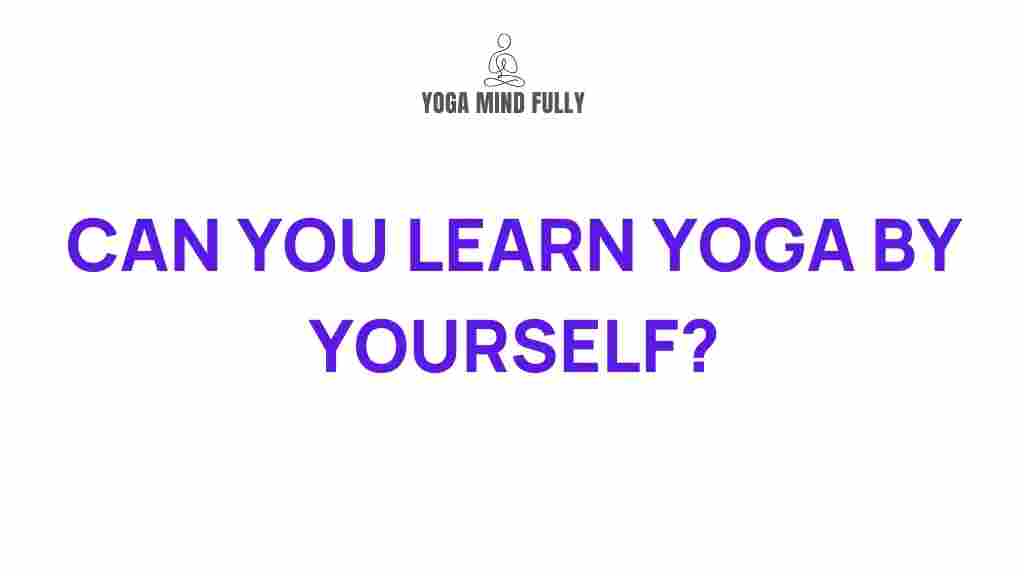How to Master Yoga Independently
Introduction
Yoga is a transformative practice that blends physical postures, breath control, and meditation to enhance your overall well-being. While joining a yoga class has its benefits, mastering yoga independently offers unparalleled flexibility and personalization. With the right approach, you can cultivate a deeper connection to your body and mind from the comfort of your home.
In this guide, we’ll uncover the secrets to mastering yoga independently, explore practical tips, and provide solutions to common challenges you might face on your journey.
Why Practice Yoga at Home?
Practicing yoga independently provides numerous advantages:
- Flexibility: Practice at your own pace and time.
- Cost-Effective: Save on studio fees and travel costs.
- Personalization: Tailor your practice to suit your needs and preferences.
- Comfort: Enjoy the familiarity of your own space.
These benefits make learning yoga on your own a rewarding endeavor.
Step-by-Step Guide to Mastering Yoga Independently
1. Create Your Yoga Space
Designating a quiet, clutter-free space for your practice is essential. Choose a spot with enough room to move freely, and add elements like a yoga mat, cushions, or candles to make it inviting.
2. Set Clear Goals
Define what you want to achieve with yoga. Are you aiming for improved flexibility, reduced stress, or better focus? Setting specific goals will keep you motivated and guide your practice.
3. Invest in Resources
While you can find plenty of free resources, investing in high-quality materials like yoga books, online courses, or apps can enhance your learning. Explore platforms such as Yoga Journal for inspiration and guidance.
4. Start with Basic Poses
Begin with foundational poses like Mountain Pose (Tadasana), Downward Dog (Adho Mukha Svanasana), and Child’s Pose (Balasana). These poses are easy to learn and provide a solid base for more advanced practices.
5. Develop a Routine
Consistency is key to mastering yoga. Schedule regular practice sessions, even if it’s just 15 minutes a day. Over time, gradually increase the duration and intensity of your sessions.
6. Incorporate Breathwork
Pranayama, or breath control, is a cornerstone of yoga. Practice techniques like Deep Breathing or Nadi Shodhana (alternate nostril breathing) to calm your mind and energize your body.
7. Stay Mindful
Yoga is as much about mental focus as physical movement. Cultivate mindfulness by paying attention to your breath and being present during each pose.
Troubleshooting Common Challenges
Learning yoga independently comes with its own set of challenges. Here’s how to overcome them:
1. Lack of Motivation
Stay inspired by setting achievable goals and tracking your progress. You can also join online communities or connect with friends to share your yoga journey.
2. Poor Technique
Incorrect posture can lead to injuries. Use mirrors or record yourself to check your alignment, and don’t hesitate to refer to instructional videos for guidance.
3. Limited Space
Adapt your practice to fit your surroundings. Even a small area can be sufficient for poses that don’t require much movement.
4. Stagnation
Feeling stuck in your practice? Challenge yourself by exploring new poses, sequences, or styles. Consider visiting our resources page for additional inspiration.
Conclusion
Mastering yoga independently is a fulfilling journey that allows you to explore the practice at your own pace. By creating a dedicated space, setting clear goals, and staying consistent, you can enjoy the countless physical, mental, and emotional benefits of yoga.
Remember, yoga is a lifelong practice. Stay patient, embrace the process, and let it guide you toward greater self-awareness and inner peace.
This article is in the category Yoga Practices and created by YogaMindFully Team
